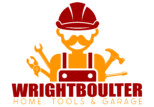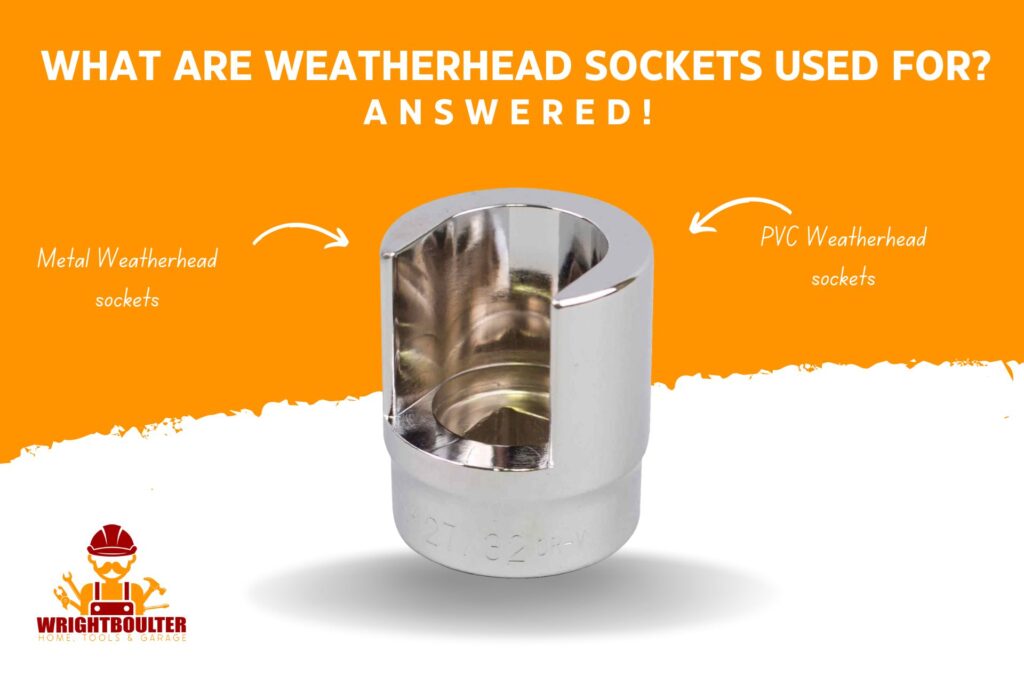Introduction
It is not easy to know the actual uses of Weatherhead for people who never worked in an agricultural, automotive, or construction setting.
So, do you want to know, what are Weatherhead sockets used for?
Weatherhead sockets are often used in the removal and installation of hydraulic hoses and fittings, including 90-degree elbow joints. These sockets are frequently used in automotive, agricultural, industries, and heavy equipment applications. These are made of a range of materials, styles, and sizes.
Weatherhead sockets have a lot more uses in different sectors. To know more details about it keep reading this article.
What Are The Uses of Weatherhead Sockets?
First, lets start with the types of Weatherhead sockets.
Types of Weatherhead Sockets
According to the use, Weatherhead sockets can be divided into two types.

Source: ebay
Metal Weatherhead sockets
The majority of metal Weatherhead sockets are made of steel or aluminum and are intended to survive severe weather.
PVC Weatherhead sockets
PVC Weatherhead sockets are made from a material known as polyvinyl chloride. These are the popular choice for several varieties of electrical wiring applications because of simple installation.
Uses Of Weatherhead Sockets
Weatherhead sockets are used to link the overhead power lines to the building’s electrical service entry. This includes homes, businesses, and factories, as well as other buildings like farms and garages that require electricity.
Because of its popularity and versatility, many tasks are done by using it. So the most common uses of Weatherhead sockets are given below.
Repairing 90-Degree Elbow Joints
In electrical wire systems, 90-degree elbow joints are frequently used in conjunction with Weatherhead sockets. Which produces sharp bends in the conduit or pipe. This is sometimes referred to as 90 cells, quarter bends, or 90 bends.

Source: tools-zone.com
However, while installing electrical wire on a building’s exterior, the wiring may need to make sharp turns to go around corners and other obstructions. Weatherhead sockets are used to tighten or loosen these 90-degree elbow joints.
AN fittings and Hydraulic Hose Installation And Removal
In order to install and remove AN fittings and hydraulic hoses, Weatherhead sockets are frequently used. These sockets are intended to create a dependable and secure connection between the fittings and the hose. It also ensures that the fittings are properly sealed and kept securely in place.
However, hydraulics are frequently used in many areas such as automotive, agricultural, and industry sectors. More specifically in cars hydraulics are used in the transmission system, brakes & steering system, and air conditioning system.
The brake and steering system needs to be fixed or maintain carefully with a weather socket. Because it is very sensitive and needs regular cleaning with brake cleaners.
Replacement and Installation of Weatherhead Fittings
Weatherhead sockets are a key tool that is used in the installation and replacement of Weatherhead fittings. They are designed to provide a secure and reliable grip on the fittings.
Weatherhead sockets are an essential tool that helps to ensure that the Weatherhead fittings are properly installed and attached to the conduit or piping.
Installation of Electrical Weatherhead
Electrical Weatherheads are devices that protect electrical wires as it enters a building or structure. These sockets are frequently used to make sure that the Weatherhead is securely attached to the conduit or other electrical parts.
This helps in avoiding the entry of moisture and other pollutants, which might harm the wire or other parts of the electrical system. Both metal and PVC Weatherhead sockets are now used to provide a secure and reliable connection between electrical wiring and conduit.
However, According to the specific use, the environment, and the preferences of the electrician or installation, the types of sockets may vary. Now we are going to know about different fields where we make the application of Weatherhead sockets more often.
Check out this video to know more details about the types of Weatherhead sockets.
https://www.youtube.com/shorts/UDKb8nFVGzc
Application of Weatherhead Sockets in Different Feilds
Weatherhead sockets are used in many different sectors to connect and seal hydraulic hoses and pipelines. Weatherhead is basically the brand’s name for these sockets. Here are a few applications of Weatherhead sockets in various fields:
Agriculture:
Weatherhead sockets are used in hydraulic systems for tractors, combines, and other large machinery in the agricultural sector. These fittings are essential for ensuring the smooth operation of hydraulic systems that control the implements, such as plows, and tillers.
Construction:
In the construction field, there are many uses for Weatherhead sockets. To connect hydraulic hoses and pipes in large machines like excavators, bulldozers, and cranes, we use Weatherhead sockets mostly.
Industrial applications
Weatherhead sockets are widely used in industrial settings where hydraulic systems are critical components of machinery and equipment. For example, the mining industry uses hydraulic systems to power heavy equipment, such as excavators, loaders, and haul trucks.
Automotive:
Hydraulic brake and power steering systems in automobiles need Weatherhead sockets while fixing. These fittings make sure that the hydraulic fluid is routed and sealed correctly, enabling the braking and steering systems to work as intended.
Weatherhead sockets are generally employed in a variety of sectors that uses hydraulic systems. Because it is more affordable in every sector, unlike hazet tools.
Types of Common Weatherhead Socket Master Set
The most popular socket sizes found in Weatherhead Master Sets are shown below, along with examples of how they are typically used:
- 1/4-inch sockets:
These sockets are frequently utilized in automotive and industrial settings for small hydraulic fittings and connections.
- 3/8 inch sockets:
These sockets are frequently found in construction and agricultural machinery and are used for medium-sized hydraulic fittings and connections.
- 1/2-inch sockets:
Larger hydraulic fittings and connections require 1/2-inch sockets, which are frequently seen in heavy machinery like bulldozers and excavators.
- 3/4-inch sockets:
These sockets are frequently found in heavy-duty hydraulic systems, including those used in mining equipment. They are used for very large hydraulic fittings and connections.
It’s important to choose the exact sizes and types of sockets according to your particular hydraulic system.
FAQs
How Much Wire Do You Leave Out of The Weatherhead Sockets?
The appropriate amount of wire to leave out of weatherhead sockets can be determined by various factors, including the existing wiring, local codes and regulations. For instance, if there is an in-floor or in-wall weatherhead that is 6 feet deep, it is recommended to leave a minimum of 12 inches of wire above the water level.
What Does an Electrical Weatherhead Look Like?
It is designed like a hood, with a surface. Where the wires enter pointing down at an angle of at least 45°, to protect it from precipitation. A tight seal against the wires is created using a rubberized gasket.
Where Are Hydraulic Fittings Used?
Hydraulic fittings are generally used to connect hoses, pipes, and tubes in hydraulic systems. In general, hydraulic machinery runs at high pressure and is frequently not a fixed system.
Conclusion
Now you know what are Weatherhead sockets used for? Whether you’re repairing an existing hydraulic system or building a new one from scratch, Weatherhead sockets are a reliable and versatile solution for you.



